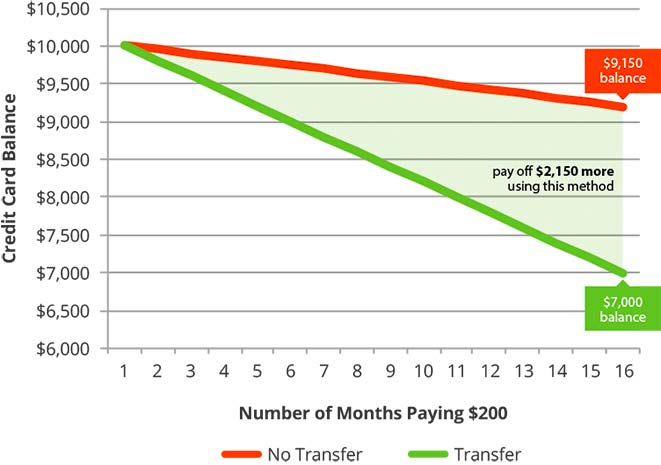The Fastest Way to Pay Off $10,000 in Credit Card Debt

Are you feeling trapped under the weight of credit card debt? Do the seemingly endless interest charges make it feel impossible to make a dent in what you owe? Take heart; there’s a powerful method recommended by astute personal finance experts that can help you tackle your credit card balance swiftly, minimizing interest payments while preserving your credit health. Let’s dive into the steps to guide you towards becoming debt-free.
Step 1: Stop Interest Charges in Their Tracks
Imagine a patient bleeding profusely in an emergency room. The first priority for a doctor is to stop the bleeding. Similarly, when dealing with a credit card balance, the initial step is halting those relentless interest charges.
How? Take advantage of banks’ promotional offers: seek out a credit card offering a lengthy “0% intro APR balance transfer” deal. These cards provide new customers with an extended period—sometimes up to 15 months—during which no interest is charged on transferred balances. Two of the most popular credit cards for this are card_name and card_name.
Why is this crucial? Consider this: out of a $200 monthly payment, a staggering $150 might be devoured by interest charges on a $10,000 balance. Only $50 of your payment goes towards reducing the actual balance. Finding a balance transfer credit card with a lengthy interest-free period, coupled with minimal fees or none at all, stops the bleeding, setting the stage for the next step.
Step 2: Leverage the Interest-Free Period
Once you’ve transferred your balances and halted those interest charges, it’s time to capitalize on the interest-free period to make substantial progress in clearing your debt. Here’s the beauty of it: maintain the same payment amount you used to make, but this time, 100% of it will chip away at your balance.
As you can see below, transferring this amount to a card offering 15 months of 0% intro APR with no transfer fee, and continuing the same $200 monthly payment, showcases how rapidly you can diminish your debt during this period.

It’s vital to note that these figures serve as an example to illustrate the process; your approved transfer amount might differ. However, the principle remains: by utilizing the interest-free period, you can efficiently tackle your debt without accumulating additional interest charges.
Key Considerations:
- Credit Utilization: Opening a new card affects your credit utilization ratio, impacting your credit score initially. Yet, as you reduce the balance, your credit utilization improves, benefiting your score in the long run.
- Transfer Fees: Be aware of potential transfer fees; while a card with no fees is ideal, sometimes a low fee might still save you money compared to high-interest charges.
- Payment Consistency: Staying disciplined in payments is crucial. Missing payments or not clearing the balance before the introductory period ends can lead to high-interest rates again.
Remember, this strategy demands financial responsibility and discipline. It’s also an opportunity to reassess spending habits and establish a sustainable budget to avoid accruing more credit card debt down the road.
By following these steps diligently, you can pave the way toward a debt-free future while minimizing the burden of interest charges.
